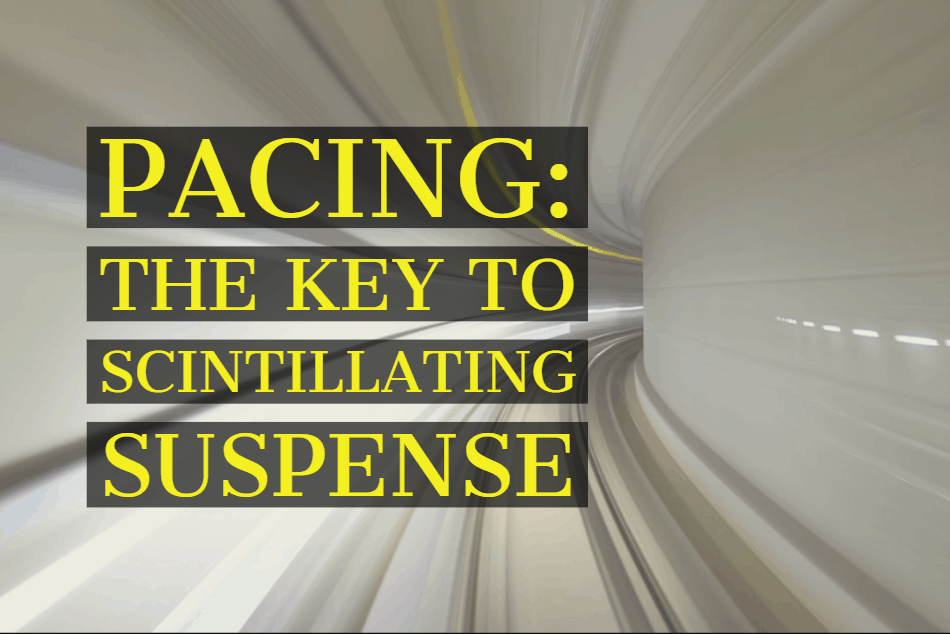by Allison Brennan
A compelling thriller needs three things: strong characters, relatable stakes, and strategic pacing. While all three are necessary, perhaps the hardest to master is pacing.
Thrillers create a visceral reaction in the reader. They have heightened expectations, tension, and are fast-paced. In all books you need to keep the reader turning pages, but especially so in a suspense novel. The best way to do that is by controlling the pace—both to speed up and slow down the story—to achieve maximum excitement for the reader.
Character is vital, but so is how the story unfolds: what are the stakes, what conflicts do your characters face, and how do you put that on paper?
Pacing is the key to crafting a great thriller. It’s all too easy to include too much backstory. That becomes ho-hum. It may be even easier to rush escalating tension and adventure without slowing for a breath.
I’ve taught dozens of workshops about writing suspense, and one of the most common questions I get are from aspiring writers who have been told by their critique group or an agent that they need to speed up—or slow down—their story. Here’s the advice I’ve shared, learned after writing more than three dozen thrillers:
Slow it down
- Add more narrative – longer descriptions, more introspection. Let the reader know how the character reacts to the conflict and stakes.
- Add flashbacks. Some people balk at flashbacks, but when done right they heighten suspense while simultaneously slowing the story.
- Layer the details, use longer sentences/paragraphs, choose words that soothe or evoke a feeling of calm. One example: use setting strategically to create a sense of foreboding and disquiet.
- Include conversations between characters with deep introspection; “quiet” action (like at a restaurant, pillow talk, driving in a car). Just make sure the conversation is relevant to the story and advances the plot—not just filler!
- Avoid adding too much narrative or description in the middle of intense action.
Speed it up
- Shorten the chapters.
- Shorten the sentences, interspersed with fragments. No wasted words.
- Write crisp dialogue that includes less introspection
- Use action verbs
- Provide less description
- Avoid too many fast-paced scenes in a row. You need to give your reader a breather, even if it’s brief.
Experiment
Try different things. For example, in my upcoming crime thriller The Third to Die, I wrote the opening six times before choosing to start in the villain’s POV. Before introducing my protagonists, I wanted to immediately put the reader into the action.
I did this to create a sense of foreboding and imminent threat and avoid too much explanation about why these specific characters were investigating that specific crime. Instead, this information emerges organically in their response to the crime.
Do I need this?
When I’m editing, I look at every scene and ask if it is absolutely necessary to the story. Does it advance the plot or add to character development, or both? If I’m bored, my readers will be bored. Those are the scenes I’ll ruthlessly edit.
The paramount rule of suspense: Don’t be boring!
Everything can be fixed. First get the core story out: the characters, the conflict, the stakes. Then focus on pacing and the story rhythm in your editing process. Maximize your story’s suspense through a strategic control of pacing.
Have questions on pacing? Or tips of your own to offer? Share with us on Facebook.

 Allison Brennan is the New York Times and USA Today bestselling and award winning author of three dozen thrillers and numerous short stories. She was nominated for Best Paperback Original Thriller by International Thriller Writers, had multiple nominations and two Daphne du Maurier Awards, and is a five-time RITA finalist for Best Romantic Suspense. Allison believes life is too short to be bored, so she had five kids and spends all her non-writing time as a sports spectator, chauffeur, and short-order cook for her munchkins. She has one dog, two cats, and three chickens. Allison and her family live in Arizona. Her novel The Third to Die will be published on February 4, 2020 and can be pre-ordered today.
Allison Brennan is the New York Times and USA Today bestselling and award winning author of three dozen thrillers and numerous short stories. She was nominated for Best Paperback Original Thriller by International Thriller Writers, had multiple nominations and two Daphne du Maurier Awards, and is a five-time RITA finalist for Best Romantic Suspense. Allison believes life is too short to be bored, so she had five kids and spends all her non-writing time as a sports spectator, chauffeur, and short-order cook for her munchkins. She has one dog, two cats, and three chickens. Allison and her family live in Arizona. Her novel The Third to Die will be published on February 4, 2020 and can be pre-ordered today.





